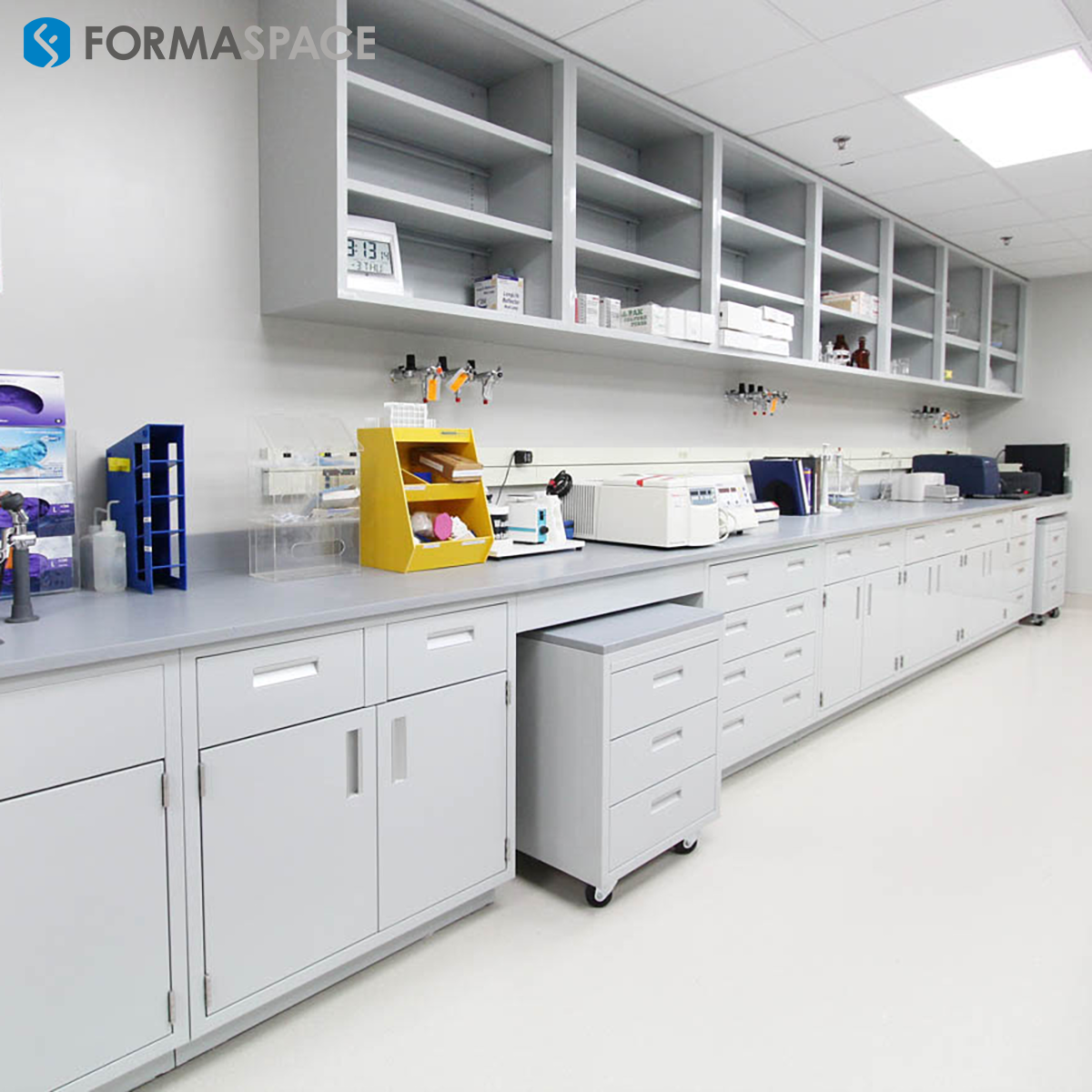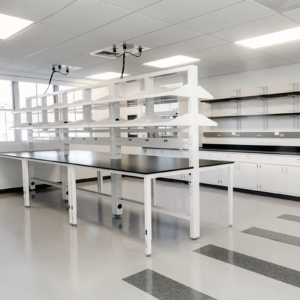In a world where the environment is changing quickly, more and more leading-edge companies are investing in new technologies to solve our growing problems associated with climate change. We take a look at some of the most promising investment opportunities and technological developments – from green sustainable business practices to full-blown geoengineering solutions.

Are We Having an Environmental Emergency?
Over in the UK, the topic of climate change is heating up (or hotting up, as the Brits say.)
Greta Thunberg, a 15-year-old activist who first captured the attention of the world with her plaintive speech at the 24th UN Conference on Climate Change in Poland, led a strike by the UK’s school children to protest against the dangerously deteriorating state of the environment. This was followed by a highly-disruptive, ten-day peaceful civil disobedience protest in the heart of London by the new Extinction Rebellion (XR) pro-environment group, whose protesters halted traffic throughout the British capital, in some cases by supergluing themselves to the outside doors of rail transit cars.
Young environmental activist Greta Thunberg speaks to the UK Parliament about the dangers of climate change.
In response, the leader of the official opposition party, Labor’s Jeremy Corbyn, and Scotland’s First Minister, Nicola Sturgeon, have both declared an environmental emergency for the UK. On the other hand, the conservative Tory government in power has remained rather silent on the issue, perhaps relieved that for once people are not talking about the Brexit neverendum crisis that‘s consumed all the oxygen in the room during the past three years.
But is there an environmental emergency? You certainly wouldn’t think so by following most press reports in the US. Even the set of energy conservation measures packaged up as The Green New Deal (GND) haven’t gotten much scrutiny, having been derailed by other GND proposals altogether unrelated to energy conservation (such as universal income) which captured the public debate.
Nevertheless, recent sobering documents released by the UN’s World Meteorological Organization (WMO), the US Department of Defense (DOD), the US Environmental Protection Agency (EPA), and other government agencies and commissions point to serious trouble ahead for the planet if we don’t take decisive action:
- The WMO reports that the period from 2015 – 2018 continued to break warming records, that concentrations of major greenhouse gas in the atmosphere are increasing, 62 million people were affected by floods and other weather-related natural disasters in the last year, and, as we lose sea ice in the northern and southern poles, world-wide sea levels are rising faster than ever before.
- The DOD delivered its legally mandated report on climate change to Congress in January, which outline the climate change risk faced by many of its military installations around the world, including the potential of rising seas inundating its essential Norfolk Naval Base in coastal Virginia. However, members of Congress and other analysts felt the relatively short 20-year horizon line of the report was insufficiently forward-looking, and that more needs to be done. (Disclaimer: the DOD is a major Formaspace customer.)

- The US Government’s Fourth National Climate Assessment (NCA4), produced by the US Global Change Research Program (USGCRP) in partnership with other Federal agencies, such as the Dept. of Agriculture, points to rapidly changing environmental conditions, from bleached corals around Hawaii to melting permafrost in an increasingly warmer Alaska.
- Earlier this month, the EPA issued a document, Planning for Natural Disaster Debris, which outlines the steps communities need to take to prepare for stronger hurricanes, tornados, wildfires, floods, and rising sea-levels due to our changing climate.
- Finally, the International Commission on Stratigraphy is meeting this month to consider whether we need to add a new geological age, the era of man, or Anthropocene, to the lexicon of geographical time. This new proposed designation is characterized in part by the effect man has had on change the climate.
Business Investment in Green Technology Ventures is Growing
So what can be done about it?
An increasing number of entrepreneurs, investors, and businesses are looking beyond the despair of environmental problems caused by climate change and, instead, see a golden business opportunity.
Let’s take a look at some of the major investments in green technology and sustainable business practices leading the way:
- The veteran money manager Jeremy Grantham, co-founder of Grantham Mayo Van Otterloo (GMO), is famous for his financial prowess: he had the prescience to anticipate both the 2000 tech bubble and the 2008 financial crisis. In a speech titled “The Race of Our Lives,” Grantham dedicated $1 billion of his fortune (98%) to solving the climate crisis before the world’s systems (especially agricultural food production) collapse due to rising temperatures.
- Meanwhile, the co-founder of Microsoft, Bill Gates, established the billion dollar Breakthrough Energy Ventures (BEV) fund to encourage startups to pursue radical solutions that curtail global emissions. BEV investors include Amazon’s founder, Jeff Bezos, investor and media mogul Michael Bloomberg, Virgin’s Richard Branson, and Alibaba’s Jack Ma. Recently, the fund made major investments in solid state batteries, fusion energy, water-from-air extraction and more.
- Google’s X startup factory (which now goes by the single letter “X”) has been making significant investments in audacious “moon shot” ideas. Three recent energy projects at X are moving from the startup phase into early-stage businesses: Makani, a kit-based wind power generation device; Dandelion Energy, a home geothermal heading company, and Malta, a thermal energy storage system.
Meet the Champions of Sustainable Business Practices
Let’s take a look at six major environmental issues facing the planet, and what new startup companies are doing about it:
Problem 1: Tragedy of the Commons — Global Pollution
Solution: Carbon Trading Credits and Other Market-Based Financial Incentives
Unlike China, whose command economy can dictate massive changes (such as the current mandate to switch the auto industry to an EV-only car fleet), we live in a market-based, capitalist democracy. Yet sometimes traditional market-based solutions to problems fail to solve problems when there are no direct costs associated with using shared resources, such as polluting the air we breathe. Economists call this the “tragedy of the commons,” and while laws and regulations can work, creating incentives (such as pollution “cap and trade” programs with “carbon trading credits”) have been very effective in encouraging industry to protect the environment without incurring the market distortion that can result from complex regulations. Entrepreneurs, such as Fabrice Le Saché working in Africa, have developed a profitable business, Ecosur Afrique, that takes advantage of the Clean Development Mechanism established under the Kyoto Protocol to provide a trading platform for companies to reduce their C02 emissions.
Problem 2: Plastic in the Oceans is Killing Off the Food Chain
Solution: Investing in Environmentally-Friendly Alternatives to Conventional Plastics
Despite increased of plastic clogging our oceans and devastating the sea creatures we depend on, bottled plastic beverage usage is up. Use of plastic shopping bags and straws is now being regulated in many jurisdictions, and coffee cups may be next. Even consumers looking for a green solution will be dismayed to learn than many so-called biodegradable plastics don’t really decompose as quickly as promised.
As we’ve written about before, companies such as Plastic Whale and Orgatec are using plastics discarded in the world’s waterways to create useful consumer goods, including carpets and upholstery products.
Given that 91% of plastics are not recycled, researchers are looking for decomposable, environmentally- friendly alternatives, such as plant-based polyester called polyethylene furanoate (PEF), which could replace the ubiquitous petroleum-based polyethylene terephthalate (PET) plastics. Other plastic substitute startups include Francisco-based Mango Materials, which created a product that allows marine organisms to digest it if it ends up in the ocean. Preventing that from happening is another business opportunity, as retailers look to clear the shelves of plastic containers and a startup designs a bubble barrier for the mouths of rivers to catch discarded plastics before they enter the world’s oceans.
Problem 3: Conventional Fossil Fuels Create Greenhouse Gases
Solution: Investments in Alternative Energy Sources
According to the Wall Street Journal, global spending on renewable energy in 2016 was $297 billion, outpacing the $143 billion invested in electricity from coal, natural gas, and nuclear power plants. Part of the reason, according to the article, is that energy costs from wind (estimated at $60 per megawatt hour or PWH) and solar (at $100 PMW) is increasingly competitive to new fossil-fuel facilities (at $50 to $170 PMW). Also shaking up the energy market is corporate demand from companies who want to only use “green power”. U.S. corporate power purchase agreements (PPAs) for renewable sources of energy rose from 2.78 gigawatts (GW) in 2017 to over 6.43 GW at the end of 2018.
As we wrote about recently, solar energy production may get an even bigger boost from the next generation perovskite cell technology which could make solar power more inexpensive than ever. Don’t count out other unconventional sources of energy either. There are major investments taking place in geothermal energy technology as well as claims that fusion technology (often criticized as being the energy of the future, e.g. always 25 years away from any current year) may soon be commercially viable – in five years this time.
Problem 4: Solar Doesn’t Work at Night
Solution: Investments in Solar-to-Storage Technology to “Close the Loop”
Internet memes have roundly criticized President Trump’s oft-repeated claim that wind and solar power can’t solve our energy problems: “Let’s put up some windmills. When the wind doesn’t blow, just turn off the television darling, please. There’s no wind, please turn off the television quickly.” There is some merit to Trump’s argument, however. Something needs to be done to “close the loop” of solar and wind production, to fill the gaps when the wind dies down or solar production stops at night.
One reasonable approach is to invest in a national high-voltage grid that could efficiently transport electricity from one part of the country, where it’s currently windy or the sun is still shining, to another where it’s not. For example, thanks to the difference in time zones, solar energy from Texas could help power the east coast for two additional hours each evening.
Meanwhile, the Los Angeles Department of Water and Power (DPW) wants to build a $3 billion pipeline and a pump station powered by solar and wind energy to move water upstream, behind the Hoover dam, where it can be released when power reserves are low. This is not a new technology for DPW, they’ve used similar technology for decades, pumping water into reservoirs at night when there is less electric demand only to release it and re-capture the hydropower during the day – the twist is, they now want to use renewable solar and wind during the day to accomplish the same thing.
Utility companies are investing in another way to solve the problem: big batteries. After experiencing a series of blackouts, South Australia turned to Tesla for an experimental mega battery project to capture solar and wind energy reserves during the day for use at night. Tesla is expanding the project to build what it calls “virtual power plants” by installing solar panels and batteries into more than 1,000 homes in the region. Other startup companies building energy storage solutions include Form Energy, who wants to create a cost-effective energy storage solution to hold energy for weeks and months.
Problem 5: Conventional Fuels Power Our Aerospace and Land-based Vehicles
Solution: Investing in Alternative Fuels for Transportation
Electric passenger vehicles, while not universal, are pretty common these days – of course, they are only as green as the power source that creates the electricity they use.* Electric trucks will be next, replacing a mostly diesel fleet that not only produces heat trapping gasses but also black carbon soot particulates associated with premature lung disease and the melting of polar ice caps.
*Recycling battery components and precious rare-earth minerals is also an important environmental consideration.
Ford has recently announced a $500 million investment in Rivian, an electric truck startup company backed by Amazon, joining Tesla who also plan an electric semi-truck. (Disclaimer: Both Ford Motor Company and Amazon are Formaspace customers.) Here is an interesting interview with Rivian CEO R.J. Scaringe on the truck that seeks to take on Ford’s popular F150 pickup truck.
Meanwhile, the car supplier Bosch is making further investments in fuel cell technology, which uses power packs that store hydrogen as fuel. Tesla’s Elon Musk has made vociferous negative attacks on fuel cell technology, but hydrogen may have a future in transportation: the oil giant Shell is looking at hydrogen-based fuels for airplanes. (Shell has also recently purchased Greenlots, an EV vehicle charging company.)
Even rocket fuel is being looked at to find ways to reduce the estimated 12,000 tons of dangerous hydrazine fuels released into the atmosphere every year by the aerospace industry. A new metal-organic framework, or MOF, material may provide a safer, greener alternative.

Problem 6: Waste Energy in Buildings
Solution: White Roofs and Zero Energy Buildings
The Nordic countries are at the forefront of an energy revolution, with far-reaching goals that go even further than Germany’s vaunted “Energy Shift” to green energy sources. How far? Nordic countries have set plans in place to be virtually fossil-fuel free by 2050. The Wall Street Journal notes that these audacious goals are pushing Nordic energy technology to the limit, turning them into world leaders in energy efficiency technology and environmentally friendly design.
We’ve written about Net Zero building design before, e.g. buildings which require near to zero energy to heat and cool. The City of Los Angeles has mandated that recent changes to encourage net zero buildings, requiring that all new buildings be “net-zero carbon” by 2030, have the goal of converting the city’s entire building stock net zero-emission technologies by 2050. In the meantime, painting your roof white can save on energy. The Energy Department’s Cool Roofs Initiative offers a free online calculator to estimate your potential energy savings.
Concrete production used in construction is very energy intensive. Startup companies such as bioMASON and EarthEnable are looking at ways to create energy efficient alternatives, particularly for developing nations.
Meanwhile, Google and Amazon are reportedly looking at AI-based solutions to reduce residential energy consumption by making “Deep Mind” AI-based predictions for daily energy use. Using this technology, home appliances that use a lot of electricity, such as refrigerators, could be remotely switched off during peak demand periods without any noticeable effects.
Part Two: Will Sustainable Business Practices Work or Will We Need to Turn to Extreme Geo-Engineering Solutions to Fix the Planet?
In the first part of this article, we looked at business investments in technology designed to reduce fossil fuel consumption while ramping up sustainable business practices. But will it be enough? In this second part, we look at more interventionist Geo-Engineering solutions designed to “fix” the planet.
Overall investments in clean energy exceeded $300 billion in 2018, according to Bloomberg’s energy research arm, but will it be enough to fix the planet? The current trends are not promising. Fossil-fuel emissions are growing, not shrinking. In fact, US energy use rose to its highest level ever last year, and China is relaxing its emissions regulations to give its economy a boost.

Meanwhile, the US is in the midst of an oil and gas production boom; it plans to invest $5 trillion in new fossil-fuel projects over the next 10 years, while investing only 1% on green energy projects in 2018.
Microsoft Co-Founder Bill Gates says “We Need a Miracle” to Save the Planet
In his annual letter to the public, Bill Gates offers a sobering conclusion: “Scientists say that to avoid these dramatic long-term changes to the climate, the world must cut greenhouse gas emissions by up to 80 percent by 2050, and eliminate them entirely by the end of the century. When I first heard this, I was surprised. Can’t we just aim to cut carbon emissions in half? I asked many scientists. But they all agreed that wouldn’t be enough. The problem is that CO2 lingers in the atmosphere for decades. Even if we halted carbon emissions tomorrow, the temperature would still rise because of the carbon that’s already been released. No, we need to get all the way down to zero.”

Bill Gates conclusion? “We need a miracle.”
Is Geo-Engineering the Solution?
If we can’t control the amount of C02 emissions we release into the atmosphere, what’s our Plan B? We may need to take dramatic steps to actively “repair” the damage we’ve done to the planet – by undertaking what’s known as “Geo-Engineering.”
It’s not a step to be taken lightly. But first, what is geo-engineering?
In short, geo-engineering is a technological approach to changing the earth’s environment. And it’s been used before, albeit on a smaller scale than what is currently contemplated. Take cloud seeding for example. The Soviets used cloud-seeding after the Chernobyl nuclear plant explosion to make the released radioactive material rain down on rural areas (in Belarus) rather than on populated areas (in Moscow).
This example illustrates some of the ethical issues with Geo-Engineering. For starters, the Soviet action was utterly lacking in transparency: the rural residents of Belarus were not informed at the time that dangerous radioactive material fell on their homes, fields, crops, and woodlands.
Indeed, scientists, ethicists, policy analysts, economists, and politicians are beginning to contemplate how to manage the process of undertaking large-scale, global geo-engineering projects. The questions they must ask include:
- Who has the jurisdictional authority to take action?
- Who makes the decision?
- Who needs to provide informed consent?
- How can we be sure the actions will produce the desired results?
- What happens if things go badly wrong?
Geo-engineering critics also point to the “moral hazard”: if the public thinks that there is an easy fix to the problem of climate change, they won’t even try to reduce their carbon footprint.
Let’s look at four geo-engineering research projects currently underway.
Geo-Engineering Concept 1: Reducing the Amount of Sunlight Reaching the Earth’s Surface
If our planet is heating up, then why not create some form of a sunshade to reduce the amount of solar rays reaching our planet’s surface?
It’s worked before.
When the Indonesian volcano Krakatoa erupted in 1883, the resulting volcanic ash that reached the upper atmosphere spread across the entire world, lowering global temperatures and slowing sea-level rise.
Modern ideas for how to reduce heat from the sun, known as SRM (for Solar Radiation Management) or Albedo modification, include launching a huge fleet of tiny mirrors (800,000 at a time, per one report) in space to create a “sun shade” to deflect the solar radiation away from Earth; or seeding the atmosphere with particulates, such as Sulphur (a la volcanoes), to increase the Earth’s reflectivity.
Geo-Engineering Concept 2: “Eating” Carbon Gases in the Atmosphere
What if we could create a machine that could simply “suck” carbon pollution and other heat-trapping gases from the air and “eat” it, for easy disposal or as a safe, useful material for something else?
Imagine driving down the road, cleaning the atmosphere as you drive? It sounds too good to be true, but major investments are at work supporting research to make this a reality.
The Canadian-company Carbon Engineering is one such venture; it’s received funding from Bill Gate’s BEV fund as well as Chevron, Occidental Petroleum, and BHP.
Global Thermostant and Kilimanjaro Energy are two other startups actively pursuing carbon capture and reuse.
Geo-Engineering Concept 3: Seeding the Oceans with Iron to Absorb Carbon
What if we could increase the ability of the ocean’s plant life, e.g. algae, to absorb heat-trapping gasses from the atmosphere, such as carbon monoxide?
Researchers have observed that algae populations at the surface of the oceans near the poles have the potential to “eat” a large amount of carbon dioxide, but, being away from land, they lack sufficient access to iron minerals to digest the gas efficiently. The idea would be to seed the ocean surfaces with iron ore, to “fertilize” the algae to encourage it to digest C02 and excrete it, where it would, theoretically, fall safely to the sea bed.
Of course, this leads to further issues. Would this work? Preliminary research says yes, with some caveats, but will the sequestered carbon stay on the sea floor and is it safe for the ocean’s marine life for it remain there? More research is needed.
Geo-Engineering Concept 4: Altering the Earth’s Surface with More Trees and Polar Blankets
It’s estimated by some sources the planet loses about 15 billion trees each year, mostly due to land clearing for agriculture. This deforestation may be responsible for up to 17% of increased carbon emissions.
What if we undertook a massive program to replant the lost trees around the world? The startup company BioCarbon is using drone-based, tree seed “bombing” technology to replant trees in difficult to reach areas, at a scale that would be difficult to achieve with manual tree planting methods – at only 20% of the cost. BioCarbon Engineering’s CEO Lauren Fletcher believes that 60 teams equipped with the drone technology could plant a billion trees each year, putting the goal of achieving a net annual increase of trees within reach (by scaling up the operations even further).
Meanwhile, concern about the melting polar ice caps and glaciers around the world has led to geo-engineering experiments using solar blankets to keep ice from melting. This approach is being tried in the Swiss Alps, to help prevent the Rhône Glacier from disappearing. Other ideas currently under research include pumping water onto glaciers to create additional ice, as well as an effort to create highly reflective artificial made of silica spheres, an idea promoted by Stanford University consulting professor Leslie Field and her company Ice911.
Build a Sustainable Manufacturing Future with Formaspace
If you can imagine it, we can build it.
Formaspace not only builds top-quality industrial furniture here at our Austin, Texas factory headquarters, we can also help you redesign your facilities to work more efficiently by designing new processes and custom designs unique to your specific needs.
That’s why we’re proud to have forward-thinking companies as clients, including Amazon, Ford Motor Company, SpaceX, Oculus, Toyota, Busch, Yeti, Apple, Google, Twitter, and Capital One.
Contact one of our friendly Formaspace Design Consultants today with your toughest challenges. You’ll find out we’re ready to solve your problems and exceed your expectations.




















